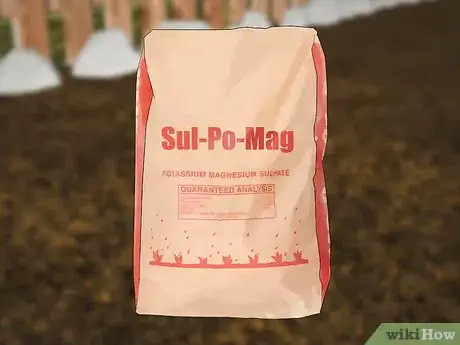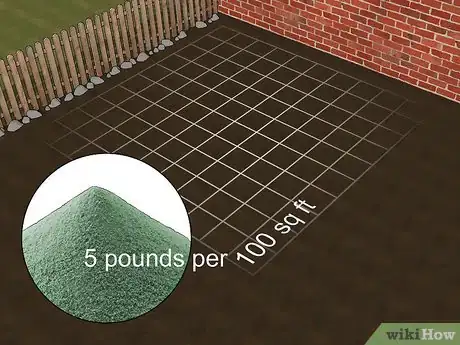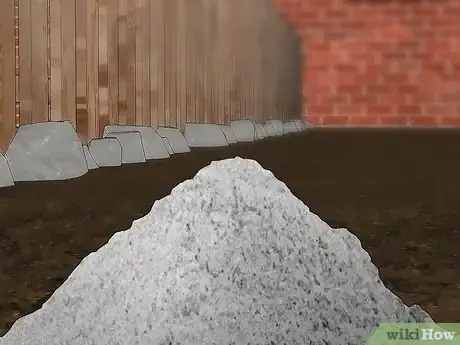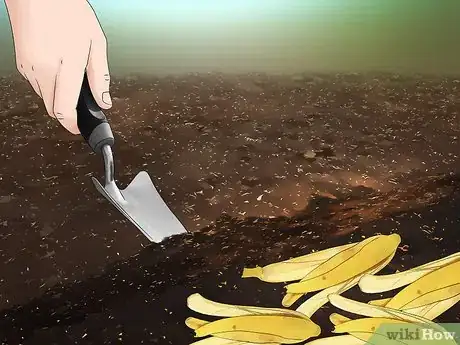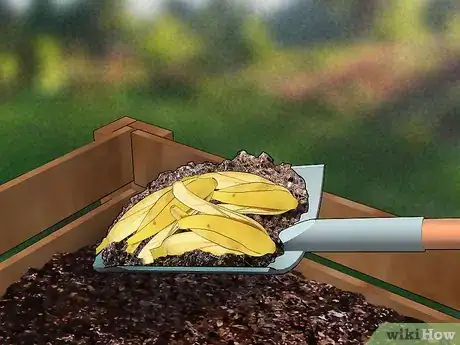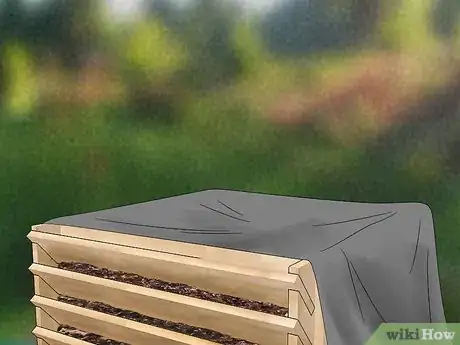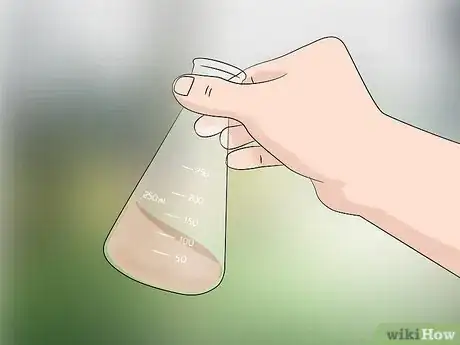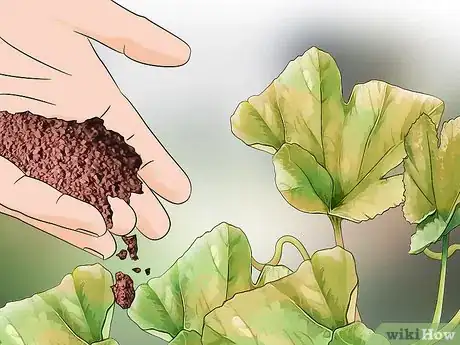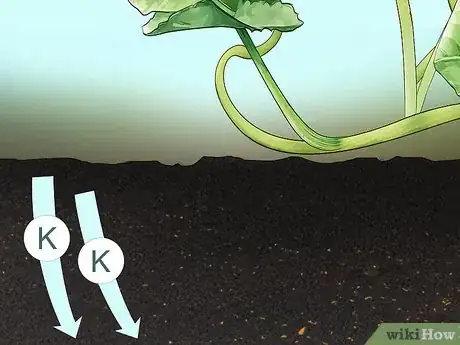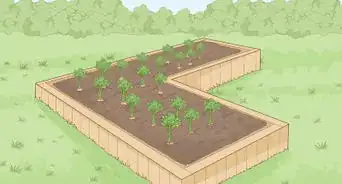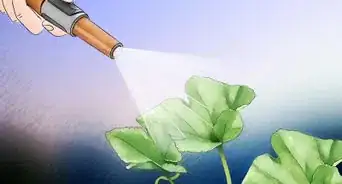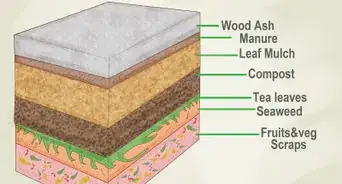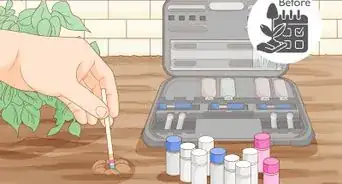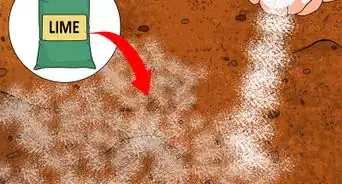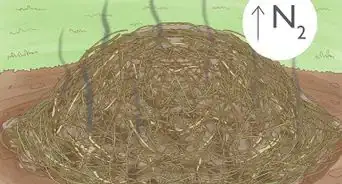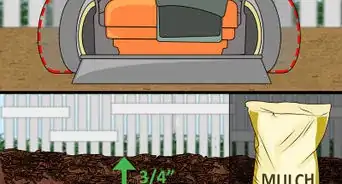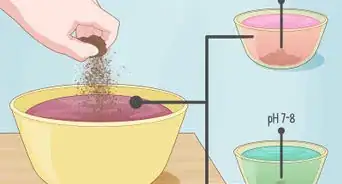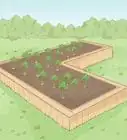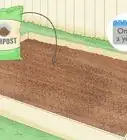This article was co-authored by wikiHow Staff. Our trained team of editors and researchers validate articles for accuracy and comprehensiveness. wikiHow's Content Management Team carefully monitors the work from our editorial staff to ensure that each article is backed by trusted research and meets our high quality standards.
wikiHow marks an article as reader-approved once it receives enough positive feedback. This article received 19 testimonials and 95% of readers who voted found it helpful, earning it our reader-approved status.
This article has been viewed 266,252 times.
Learn more...
Nitrogen, phosphorus, and potassium are the key nutrients that plants need to grow. Whether it's been washed away by water or used up for flowering and fruiting, low potassium requires a soil adjustment. Fortunately, lots of organic solutions are available for both quick fixes and long-term soil maintenance. To keep your garden green and maximize your yield, add potassium when your plants start to flower or if you spot yellowing. In addition, testing your soil every one to two years will let you know exactly what amendments to make.
Things You Should Know
- Fast-acting amendments like potassium chloride, potassium sulfate, seaweed, Sul-Po-Mag, and hardwood ash can quickly provide nutrients.
- Greensand, granite dust, and banana peels will slowly release potassium into your organic garden.
- If you notice yellowing leaves or your annual soil test results indicate low potassium, add potassium to your garden.
Steps
Adding Fast-Acting Amendments
-
1Mix in muriate of potash or sulfate of potash. Muriate of potash, or potassium chloride, and sulfate of potash, or potassium sulfate, are natural minerals. Muriate of potash tends to be cheaper, but the chlorine it contains can hurt the helpful microbes living in your garden's soil. Sulfate of potash is safer, but it’s a bit more expensive.[1]
- Check your product’s label for specific instructions on how much to add per square foot or meter.
- Make sure the product you purchase is certified organic by the Organic Minerals Review Institute (OMRI).
-
2Try kelp meal or seaweed. Kelp and other types of seaweed are rich in potassium, and quickly release it into soil. You can either mix a few handfuls of dried kelp meal into the soil or by spray it with a liquid seaweed spray.[2]
- Mix in a pound of kelp meal per square foot of soil (about 450 grams for 9 square meters).
Advertisement -
3Try Sul-Po-Mag. Also called langbeinite or sulfate of potash-magnesia, Sul-Po-Mag is your most affordable option. It’s best to use it if a soil test reveals your soil is low in both potassium and magnesium.
- Check your product’s label to ensure it’s OMRI certified and for recommended amounts per square foot or meter.
-
4Add hardwood ash only if you need to increase the soil’s pH. Sprinkle 1 to 2 pounds of ash per 100 square feet (450 to 900 grams per 9 square meters).[3] Wood ash raises soil pH, or decreases the acidity. If you use wood ash to supply the garden with potassium, it’s best to regularly test the pH to make sure that the soil is balanced.
- Don’t use wood ash around acid-loving plants, like azaleas or blueberries.
Using Compost and Slow-Release Amendments
-
1Add greensand to your soil. Use about 5 pounds (2.25 kilograms) per 100 square feet (9 square meters) of soil. Greensand releases potassium at a slow rate, so it’s better for long-term soil maintenance than quick adjustments. It also works as a conditioner and helps soil retain water.[4]
- In addition to digging greensand into your soil directly, you can also add it to your compost pile to improve the potassium content of your compost.
-
2Add granite dust. Granite dust is mined from natural granite quarries and is fairly inexpensive. Like greensand, it releases potassium slowly, so it won’t work well if you need to make a quick fix.[5]
-
3Bury banana peels in your soil. Cut up peels into small pieces and bury them an inch or two (4 or 5 centimeters) in your soil. The peels will take time to rot, so they’ll release potassium more slowly than other amendments.
- Adding banana peels directly to your soil will also help deter aphids.[6]
-
4Beef up your compost with banana peels. To increase your compost's potassium content, add fruit and vegetable waste to the pile. Banana peels are your best bet, but orange rinds, lemon rinds, beets, spinach, and tomatoes will make excellent additions, too.[7]
- Keep in mind you’ll need to give your compost weeks or months to mature.
-
5Keep your compost covered to prevent potassium leaching. Use a lidded container or cover your compost heap with a tarp when you’re not using it. Potassium compounds are water soluble, so rainfall can easily wash them out of your compost.[8]
Knowing When to Add Potassium
-
1Have your soil tested every one to two years. For most gardeners, it’s recommended to have your soil lab tested every two years. If you’re a serious gardener and want to maximize your crop, test your soil every season before you plant.
- The results will let you know if your soil contains low, medium, optimum, or high levels of potassium, nitrogen, phosphorus, and other nutrients.
- Search online for a nearby university or other soil-testing lab, or contact your local extension agent.
-
2Add potassium when your crop starts to flower and fruit. If you’re growing fruits and vegetables, prevent potassium deficiency by giving your plants a potassium boost when they start to flower. When they flower and fruit, plants can deplete their potassium supply in a matter of days.[9]
-
3Add potassium if you spot signs of deficiency. Signs of deficiency include yellow leaves and brown leaf edges. Discoloration usually occurs in older leaves first, or those closer to the bottom of your plant. In fruiting plants, like tomatoes, you might see uneven ripening or yellow patches on the fruit.
-
4Monitor your plants more closely if you have sandy soil. Because of its high solubility, potassium can easily leach out of soil, especially in coarse, sandy soils. Keep a close eye on your plants if you know leaching could be an issue. If possible, test your soil more frequently.
- Amending your sandy soil with manure and well-rotted compost can help prevent leaching.
-
5Check for signs of magnesium deficiency. Adding more potassium can lower the amount of other nutrients that the plant absorbs. Potassium competes with magnesium most directly, so look for yellowing between leaves’ veins. The veins themselves stay green, but the the spaces between them turn yellow.[10]
- If you add potassium but notice yellowing occurs or worsens, just purchase an organic calcium-magnesium supplement or magnesium sulfate. Depending on your product, you’ll either mix it into the soil or spray it onto your plant’s bottom leaves.
Community Q&A
-
QuestionWhere can I purchase any of the potassium sources from the article that are OMRI approved?
 Community AnswerCheck your local plant nursery, home improvement store, or search online for OMRI certified products.
Community AnswerCheck your local plant nursery, home improvement store, or search online for OMRI certified products. -
QuestionIs comfrey leaf a potassium source?
 Community AnswerYes, comfrey leaf is a great green manure. It adds nitrogen, phosphorus, and potassium, and works well as both a soil amendment and compost additive.
Community AnswerYes, comfrey leaf is a great green manure. It adds nitrogen, phosphorus, and potassium, and works well as both a soil amendment and compost additive. -
QuestionWhat will add nitrogen quickly?
 Community AnswerUrine. Just water it down about 20:1. You could buy something at the store.
Community AnswerUrine. Just water it down about 20:1. You could buy something at the store.
References
- ↑ https://www.todayshomeowner.com/organic-sources-of-potassium-for-your-lawn-or-garden/
- ↑ http://www.grow-it-organically.com/organic-potash-sources.html
- ↑ http://www.grow-it-organically.com/organic-potash-sources.html
- ↑ http://www.grow-it-organically.com/organic-potash-sources.html
- ↑ https://www.todayshomeowner.com/organic-sources-of-potassium-for-your-lawn-or-garden/
- ↑ http://www.popularmechanics.com/home/lawn-garden/how-to/a9251/banana-peels-eggshells-and-more-trash-your-garden-will-love-15699672/
- ↑ https://www.todayshomeowner.com/organic-sources-of-potassium-for-your-lawn-or-garden/
- ↑ http://www.gardenmyths.com/compost-fertilizer-numbers/
- ↑ https://www.maximumyield.com/boosting-your-harvest-with-potassium-supplements/2/1251
About This Article
To add potassium to an organic garden, cut up banana peels into small pieces and bury them 1 to 2 inches in the soil. Alternatively, mix in a few handfuls of dried kelp meal, or spray the soil with a liquid seaweed spray. If you’re adding potassium to decrease the soil’s acidity, use 1 to 2 pounds of hardwood ash per 100 square feet of soil. Additionally, start a compost pile with fruit and vegetable waste such as banana peels, orange rinds, spinach, and tomatoes for a constant supply of potassium for your garden. For more advice, including how to use natural minerals like potassium sulfate in your garden, keep reading.


